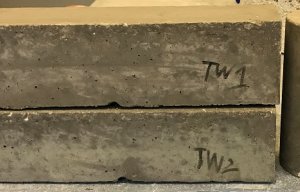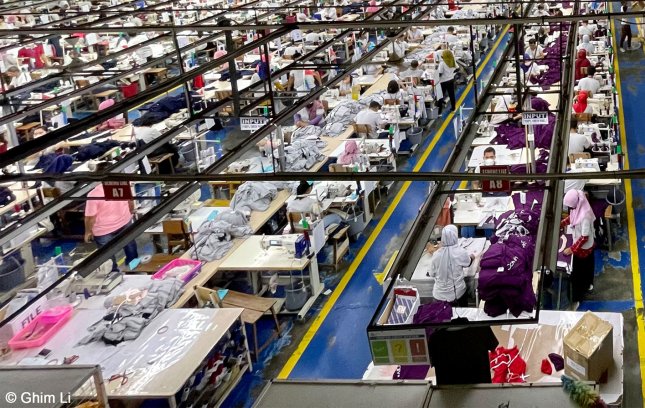
Graphene concrete has carbon-cutting potential
ITMA ASIA + CITME in 2025 will provide ASEAN companies with access to the latest technologies in garment and textile production.

11th November 2024
Innovation in Textiles
|
Singapore
As the appealing and convenient location for ITMA ASIA + CITME 2025, Singapore sits at the heart of the ASEAN region. It is surrounded by major garment and textile manufacturing countries including Cambodia, Indonesia, Malaysia, Myanmar, Thailand and Vietnam.
Textile and clothing exports from all of these countries have climbed significantly since the end of restrictions due to the Covid-19 pandemic.
The rise of Vietnam as a textile and clothing giant since joining the WTO in 2007 has been particularly notable – in the following 15 years its global exports climbed by a remarkable 469%.
Today, almost 3 million people are employed in Vietnam’s textile industry and it is now the second largest garment exporter in the world, supplying 6.4% of the world’s apparel exports.
At the same time, heavy investment has gone into strengthening upstream sectors of the textile and clothing pipeline and reducing the industry’s dependence on imported yarns and fabrics.
Investors have also been attracted by Vietnam’s rapidly expanding consumer market and by the expansion of its luxury industry. Recent luxury store openings in Vietnam have included Dior, Louis Vuitton and Tiffany, and many European fashion houses have partnered with local distributors of luxury brands in the country.
Transformation
Cambodia also has a significant textiles and clothing industry and is now the sixth largest garment exporter to both the US and Europe. Its industry is now ripe for expansion and in 2023 Cambodia’s government launched the Industrial Transformation Map to further encourage investments in modern technology, technology transfer and skills training.
“The member countries of ASEAN have collectively established a vertical and integrated supply chain with the flexibility to address different sourcing needs in terms of quantity or product type, from basic to high-end,” says Wilson Teo, president of the Singapore Fashion Council. “Production in ASEAN is competitive in terms of cost and competency, with a developed infrastructure supporting resilient and agile services.”
Sustainability has become a priority for many ASEAN companies, he adds, not just in terms of regulatory compliance but also in response to demands from the brands and a growing environmental awareness among consumers.
Increasingly, the region’s manufacturers are selecting eco-friendly or responsibly sourced materials, reducing their water and energy consumption, minimising waste and implementing recycling and upcycling initiatives. Heavy investment in new waste-water treatment and clean and renewable energy systems is also notable.
Responsible production
“All of these initiatives not only make economic sense but also demonstrate responsible production,” Teo observes. “We have also seen the greater adoption of advanced machinery, automation and digitalisation, as well as closer collaboration between manufacturers and brands that includes joint research and development efforts, sharing best practices and working together to establish and meet sustainability targets and standards.
“In addition, ASEAN textile manufacturers are increasingly focused on providing transparency and traceability throughout the supply chain.”
Fully integrated network
A good example of a pan-ASEAN company turning good intentions into concrete action and achievement is Singapore-headquartered Ghim Li, which has fully vertical textile production at its mill in Malaysia, and cut-and-sew garment operations in Cambodia, Indonesia, Malaysia and Vietnam. This fully integrated ASEAN network shipped 28 million garments globally in 2023, achieving annual sales of US$116.4 million.
In terms of sustainability, having introduced several initiatives across its operations in 2016, Ghim Li has subsequently achieved savings of approaching 30,000 MT of CO2, the equivalent of 3.2 million gallons of oil, and recycled 1.1 million cubic litres of water. The company has also received a Gold Award from Project Gigaton, Walmart’s initiative to remove one billion metric tons of greenhouse gases from its global value chain by 2030.
Timely event
“ITMA ASIA + CITME in 2025 will provide ASEAN companies with access to the latest technologies in garment and textile production,” says Wilson Teo. “The industry continues to evolve at a rapid pace with technology disruptions, breakthroughs in innovations and the impact of sustainability. Garment and textile industrialists need to keep up and transform when necessary, in order to stay relevant.”

Business intelligence for the fibre, textiles and apparel industries: technologies, innovations, markets, investments, trade policy, sourcing, strategy...
Find out more